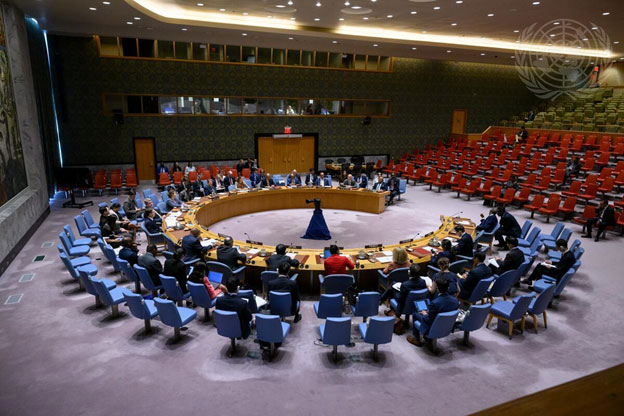
UNITED NATIONS, Sep 24 (IPS) – Somalia is presently within the midst of a dire humanitarian disaster that threatens to destabilize the nation’s safety. This disaster is a results of the Somali Civil Struggle, which started in 1991. Altercations between clan-based operations have brought on a number of points through the years, together with over 596 civilian casualties, in accordance with the United Nations Help Mission in Somalia (UNSOM). Tensions have significantly intensified in 2024, with ranges of inside displacement and meals insecurity rising quickly.
“Our humanitarian colleagues inform us that because the starting of the yr, an estimated 150,000 folks have been displaced by renewed clan battle and ongoing army operations. This has intensified current vulnerabilities and additional worsened humanitarian wants”, acknowledged Stéphane Dujarric, Spokesperson for the Secretary-Normal, at a press briefing on the United Nations (UN) Headquarters.
Ranges of generalized violence in Somalia have seen a substantial uptick lately. The UN experiences a rise in gender-based violence from 2022 onward, with instances of home violence and rape hovering amongst women in displacement shelters. The United Nations Kids’s Fund (UNICEF) estimates that 45 % of women are married off earlier than reaching the age of 18.
Moreover, violence focusing on Somali kids stays excessive, with killings, recruitment, and sexual violence changing into extra frequent, in accordance with the Human Rights Watch (HRW). Kids have been detained by Somali authorities because of suspicion that they’re affiliated with the Al- Shabab armed group. Moreover, assaults on colleges have considerably exacerbated the continued training disaster within the nation. The U.S. Company for Worldwide Improvement (USAID) estimates that 85 % of Somali kids should not enrolled at school.
Widespread meals insecurity and famine have been points which have plagued Somalia for many years. From 2020 to 2023, Somalia had skilled its longest drought on file, with the ensuing starvation disaster pushing communities to the brink of collapse. Heavy rainfall and flooding within the first quarter of 2024 have left over 4 million folks severely meals insecure, in accordance with the Built-in Meals Safety Section Classification (IPC).
Armed battle over the previous three many years has considerably impeded the expansion of Somalia’s agricultural sector, exacerbating the starvation disaster. The Worldwide Rescue Committee (IRC) states that violent altercations have broken Somalia’s “programs and infrastructure that may have offered a guardrail towards local weather and financial catastrophe”. There have additionally been experiences of meals and important assets being burned by combatants lately.
Somalia presently depends closely on imports to forestall nationwide starvation. The World Financial institution states, “the economic system remained closely import-dependent as battle has destroyed the economic system’s productive capability”. It’s estimated that over 55 % of the inhabitants lives in excessive poverty, with GDP development remaining comparatively stagnant.
The displacement disaster in Somalia is ranked as some of the extreme on this planet. As of now, there are roughly 4 million folks internally displaced, which is about 21 % of the nation’s inhabitants.
The United Nations Workplace for the Coordination of Humanitarian Affairs (OCHA) estimates that 247,000 have been displaced from their properties because of heavy flooding. About 53,600 displaced peoples have been affected by the floods, with important shelters being destroyed.
The World Financial institution provides that there are over 38,000 refugees in Somalia from bordering nations resembling Ethiopia and Kenya, in addition to Yemen. This inflow of refugees has overwhelmed Somali displacement shelters, resulting in overcrowding, poor hygiene, safety considerations, restricted entry to important assets, and an elevated threat of gender-based violence.
Armed battle has significantly worsened residing situations and entry to important assets for displaced peoples. A report by the HRW states that assaults by the Al-Shabab armed group have led to blockages in Baidoa city, impeding the arrival of humanitarian help.
“In July, Médecins Sans Frontières (Docs With out Borders, MSF) introduced they have been withdrawing from Las Anod because of elevated ranges of violence, recurrent assaults on medical amenities, and accidents amongst medical employees”, added HRW. As well as, flooding has considerably impeded humanitarian help, with many areas being completely inaccessible.
Moreover, research by the World Well being Group (WHO) state that Somalia has the excellence of getting probably the most prevalent psychological well being disaster on this planet, on account of extended publicity to violence. Roughly one third of the inhabitants is plagued with some type of psychological dysfunction, which is significantly exacerbated by the shortage of psychological well being amenities within the nation. WHO has solely formally acknowledged 5 psychological hospitals within the nation.
At the moment, humanitarian initiatives by the UN are underway in an effort to mitigate the continued disaster. UNSOM is devoted to supporting peacekeeping missions, supported by the federal authorities. OCHA is within the means of aiding flood-affected communities. The 2024 Humanitarian Wants and Response Plan for Somalia asks for 1.6 billion {dollars} to successfully soothe tensions and help over 5.2 million folks. The UN significantly encourages donor contributions as solely 37 % of that aim has been reached.
IPS UN Bureau Report
Comply with @IPSNewsUNBureau
Comply with IPS Information UN Bureau on Instagram
© Inter Press Service (2024) — All Rights ReservedAuthentic supply: Inter Press Service












